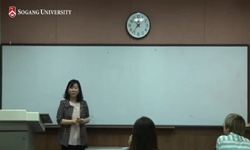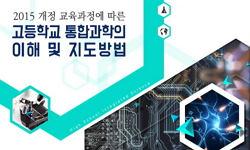This study is intended to improve curriculum of the Korean education department of INAES in Paraguay based on the environmental analysis to be preceded for curriculum development. The factors for environmental analysis in the established language curr...
http://chineseinput.net/에서 pinyin(병음)방식으로 중국어를 변환할 수 있습니다.
변환된 중국어를 복사하여 사용하시면 됩니다.
- 中文 을 입력하시려면 zhongwen을 입력하시고 space를누르시면됩니다.
- 北京 을 입력하시려면 beijing을 입력하시고 space를 누르시면 됩니다.
https://www.riss.kr/link?id=T16090866
- 저자
-
발행사항
부산 : 부산외국어대학교 대학원, 2022
-
학위논문사항
학위논문(박사) -- 부산외국어대학교 대학원 , 외국어로서의한국어교육학과 , 2022. 2
-
발행연도
2022
-
작성언어
한국어
- 주제어
-
KDC
374.71 판사항(5)
-
발행국(도시)
부산
-
기타서명
A Study on improvement in curriculum of overseas Korean education department based on environmental analysis
-
형태사항
viii, 189 p. : 도표 ; 26 cm
-
일반주기명
부산외국어대학교 논문은 저작권에 의해 보호받습니다
지도교수: 송향근
참고문헌 수록 -
UCI식별코드
I804:21022-200000602001
- 소장기관
-
0
상세조회 -
0
다운로드
부가정보
다국어 초록 (Multilingual Abstract)
Chapter 1 identified the necessity and purpose of this study and examined the significance of the study on Korean language curriculum as the base of discussion. Precedent studies on overseas development of Korean language curriculum and Korean language curriculum were examined as well. It was found that the content of studies on the existing overseas development of Korean language curriculum was limited to the current status without a specific set-up of the factors for environmental analysis.
In Chapter 2, the theoretical background of the type and procedure of curriculum was considered as the basis for discussion on curriculum improvement, and the discussion on the environmental analysis with regard to the development of curriculum was reviewed. In addition, factors for the environmental analysis necessary for the curriculum to cultivate Korean language teachers were established.
Chapter 3 analyzed the environment of the Korean education department of INAES in Paraguay by factor with the environmental analysis factors established in Chapter 2. The curriculum of the department currently in progress was examined in detail, and the local policies for foreign language education and cultivation of foreign language teachers, and the status of Korean language in the country were analyzed as dividing the environments internally and externally.
In Chapter 4, the needs of the learners and teachers to improve the curriculum of the Korean education department of INAES were investigated, and the analysis results were presented. The questionnaire participants were 56 learners and 12 professors. Additionally, a total of 54 learners and professors responded to a questionnaire about the necessity of subjects required to acquire the second Korean language teacher's license. The teachers were limited to those who teach Korean in the country or have experience in teaching the language. The questions were largely divided into general items and research on the curriculum improvement. The research on perception on Korean language showed that there was a difference between the Spanish-speaking learners’ perception on Korean language and their perception on other languages. In addition, it was identified that their responses regarding Korean language classes, circumstances, topics, and learning objectives demonstrated that the learners, the teachers, and the educational environment in Paraguay currently required a new curriculum. The results drawn from this were fed and applied into the development of curriculum in Chapter 5.
Based on the earlier studies, a plan for improvement in the curriculum was presented in Chapter 5. Specific content was proposed focusing on education objective, selection of educational content, arrangement of educational content, and outline of subjects. It was set with the purpose of nurturing professional Korean language teachers with expertise in the language and abilities to have as a language teacher, with the principle of curriculum design as a comprehensive technique, versatility, practicality, and clarity. Next, the purpose and objective of the Korean education department of IANES were concretely established, and the subjects were selected based on non-native Korean language teachers’ competences and INAES curriculum.
This study precisely informed the current status of Korean language education in Paraguay in Latin America, which had not dealt with in previous studies, analyzed the Korean language curriculum in this Spanish-speaking country and figured out its problems, and established the environmental analysis factors that had not been closely considered in the existing overseas departments to cultivate Korean language teachers. This will serve as a standard for the development of curriculum for training overseas Korean language teachers. It has a significance in that it designed a curriculum to cultivate Korean language teachers with a focus on improving non-native Korean language teachers’ competences and applied it to the actual overseas Korean education department curriculum.
This study is intended to improve curriculum of the Korean education department of INAES in Paraguay based on the environmental analysis to be preceded for curriculum development. The factors for environmental analysis in the established language curriculum are not suitable as the ones to be analyzed for development of the overseas Korean education department curriculum aimed at fostering Korean language teachers. Accordingly, the factors for environmental analysis to be analyzed when cultivating Korean language teachers were set up to be applied to the improvement in curriculum after an in-depth analysis. To be concrete, the present conditions of the Korean education department of INAES and its curriculum were analyzed according to the factors for environmental analysis and problems were drawn. After then, a requirement analysis targeting the learners and teachers was conducted, and the results were analyzed to present a curriculum development plan reflecting this. The content of this study summarized by chapter is as follows.
Chapter 1 identified the necessity and purpose of this study and examined the significance of the study on Korean language curriculum as the base of discussion. Precedent studies on overseas development of Korean language curriculum and Korean language curriculum were examined as well. It was found that the content of studies on the existing overseas development of Korean language curriculum was limited to the current status without a specific set-up of the factors for environmental analysis.
In Chapter 2, the theoretical background of the type and procedure of curriculum was considered as the basis for discussion on curriculum improvement, and the discussion on the environmental analysis with regard to the development of curriculum was reviewed. In addition, factors for the environmental analysis necessary for the curriculum to cultivate Korean language teachers were established.
Chapter 3 analyzed the environment of the Korean education department of INAES in Paraguay by factor with the environmental analysis factors established in Chapter 2. The curriculum of the department currently in progress was examined in detail, and the local policies for foreign language education and cultivation of foreign language teachers, and the status of Korean language in the country were analyzed as dividing the environments internally and externally.
In Chapter 4, the needs of the learners and teachers to improve the curriculum of the Korean education department of INAES were investigated, and the analysis results were presented. The questionnaire participants were 56 learners and 12 professors. Additionally, a total of 54 learners and professors responded to a questionnaire about the necessity of subjects required to acquire the second Korean language teacher's license. The teachers were limited to those who teach Korean in the country or have experience in teaching the language. The questions were largely divided into general items and research on the curriculum improvement. The research on perception on Korean language showed that there was a difference between the Spanish-speaking learners’ perception on Korean language and their perception on other languages. In addition, it was identified that their responses regarding Korean language classes, circumstances, topics, and learning objectives demonstrated that the learners, the teachers, and the educational environment in Paraguay currently required a new curriculum. The results drawn from this were fed and applied into the development of curriculum in Chapter 5.
Based on the earlier studies, a plan for improvement in the curriculum was presented in Chapter 5. Specific content was proposed focusing on education objective, selection of educational content, arrangement of educational content, and outline of subjects. It was set with the purpose of nurturing professional Korean language teachers with expertise in the language and abilities to have as a language teacher, with the principle of curriculum design as a comprehensive technique, versatility, practicality, and clarity. Next, the purpose and objective of the Korean education department of IANES were concretely established, and the subjects were selected based on non-native Korean language teachers’ competences and INAES curriculum.
This study precisely informed the current status of Korean language education in Paraguay in Latin America, which had not dealt with in previous studies, analyzed the Korean language curriculum in this Spanish-speaking country and figured out its problems, and established the environmental analysis factors that had not been closely considered in the existing overseas departments to cultivate Korean language teachers. This will serve as a standard for the development of curriculum for training overseas Korean language teachers. It has a significance in that it designed a curriculum to cultivate Korean language teachers with a focus on improving non-native Korean language teachers’ competences and applied it to the actual overseas Korean education department curriculum.
목차 (Table of Contents)
- Ⅰ. 서 론 1
- 1.1 연구의 목적과 필요성 1
- 1.2 연구의 범위와 방법 5
- 1.3 선행 연구 7
- 1.3.1 해외 한국어 교육과정 개발에 대한 연구 8
- Ⅰ. 서 론 1
- 1.1 연구의 목적과 필요성 1
- 1.2 연구의 범위와 방법 5
- 1.3 선행 연구 7
- 1.3.1 해외 한국어 교육과정 개발에 대한 연구 8
- 1.3.2 한국어교원 양성 교육과정에 대한 연구 10
- Ⅱ. 이론적 배경 14
- 2.1 교육과정 이론 14
- 2.1.1 교육과정의 개념과 유형 14
- 2.1.2 교육과정의 개발 모형과 절차 19
- 2.2 환경분석 관련 이론 35
- 2.2.1 환경분석의 의미와 필요성 35
- 2.2.2 환경분석 요인 36
- 2.3 해외 한국어교원 양성 교육과정 개발에서의 환경분석 요인 45
- 2.3.1 환경분석 요인 선정 기준 45
- 2.3.2 환경분석 요인 선정 60
- Ⅲ. 파라과이 한국어교육 환경분석 63
- 3.1 파라과이 사회 환경 63
- 3.2 학습 상황 67
- 3.3 교육과정 73
- 3.3.1 교육과정 변화 73
- 3.3.2 INAES 내 타학과와의 비교 분석 81
- 3.3.3 교직실습 84
- 3.4 교육과정 관리 87
- 3.5 교수자 89
- 3.6 교수-학습 환경 90
- 3.7 INAES 교육과정 분석 결과 92
- Ⅳ. INAES 한국어교육학과 교육과정 개선을 위한 요구분석 95
- 4.1 요구분석 개요 95
- 4.2 요구분석 결과 100
- 4.2.1 한국어에 대한 인식 100
- 4.2.2 수업 환경 106
- 4.2.3 교육 과정 일반 108
- 4.2.4 교과목 필요도 조사 123
- 4.2.5 심층 인터뷰 139
- Ⅴ. 파라과이 한국어 교육과정 개선 내용 143
- 5.1 INAES 한국어교육학과 교육과정 설계 원리 143
- 5.2 INAES 한국어교육학과 교육과정 모형 145
- 5.2.1 교육과정의 목적과 목표 145
- 5.2.2 교육과정의 학년별 총괄목표 148
- 5.2.3 INAES 한국어교육학과 교육과정 전문가 검토 151
- 5.2.4 역량에 따른 교과목 선정 153
- 5.3 INAES 한국어교육학과 교육과정 세부 내용 154
- 5.3.1 학년별 교과목 선정과 배열 154
- 5.3.2 교과목 선정과 개요 155
- Ⅵ. 결 론 158
- 참고문헌 161
- Abstract 170
- 부 록 173













